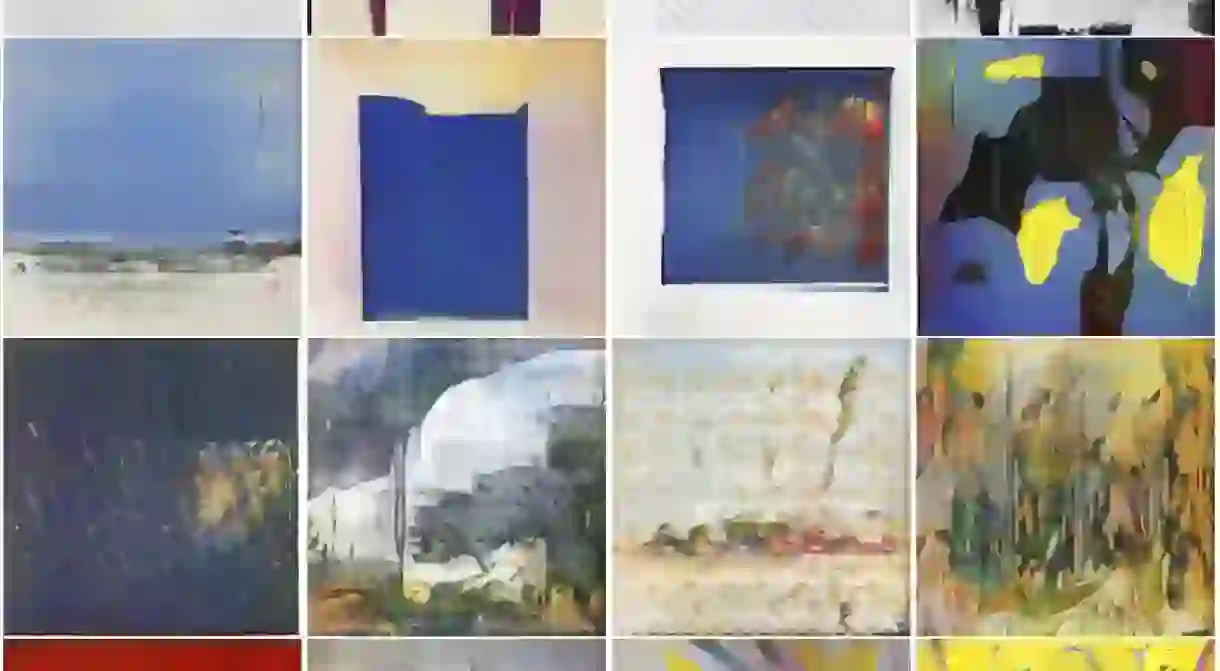Turns Out Computers Can Make Some Pretty Convincing Art

What do you get when you program a computer to create an original work of art? This is the precise question that Rutgers University’s Art and Artificial Intelligence (AI) Lab has sought to answer. Last month, they published the results of their new experiment, and it seems that computers can be artists too.
In 2015, Rutgers’ Art and AI Lab published two papers on an algorithm by which computers could learn to identify an artwork’s genre (i.e. landscape painting, portrait), style (i.e. surrealism, impressionism), and artist.
“To train their algorithm,” Smithsonian reported, “researchers used more than 80,000 images from WikiArt.org, one of the largest online collections of digital art.”
The algorithm turned the computer into something of an art historian, enabling it with the capacity to draw discerning connections between artworks, assess artistic qualities and ultimately identify more than 60 percent of artists’ works correctly—not too bad for a machine without an art history degree.

The new June 2017 study draws on this previous experiment, taking it a step further to test what happens when computers don’t just identify art, but create it themselves.
“We conducted experiments to compare the response of human subjects to the generated art with their response to art created by artists,” Ahmed Elgammal, Bingchen Liu, Mohamed Elhoseiny, and Marian Mazzone write in their paper. “The results show that human subjects could not distinguish art generated by the proposed system from art generated by contemporary artists and shown in top art fairs.” In other words, AI-generated art can appear surprisingly skilled.
In order to reach this conclusion, the researchers modified a system of Generative Adversarial Networks (GAN), “in which deep neural networks are taught to replicate a number of existing painting styles, such as Baroque, Pointillism, Color Field, Rococo, Fauvism, and Abstract Expressionism,” arnet News explains. “One network generates the images based on what it has been taught, and the other network judges the resulting works.”
Comparatively, GAN’s modification, Creative Adversarial Networks (CAN), “maximiz[es] deviation from established styles,” according to the paper. As a result, the AI-generated artworks are influenced by existing aesthetics but simultaneously unique due to the deviations—akin to the way an artist’s mind would work.

“The images generated by CAN do not look like traditional art,” the paper concludes. The researchers subsequently asked human participants to guess whether a selection of artworks were computer-generated or handmade. Amongst the artworks in question were “historical Abstract Expressionist works and non-figurative work on view at Art Basel in 2016,” artnet reported.
According to the study, the overwhelming majority (85 percent) of participants correctly identified the Abstract Expressionist works as handmade by human artists; 53 percent wrongly attributed CAN images to human artists; 35 percent attributed GAN-generated images to human artists; and only 41 percent believed the artworks at Art Basel to be human-made. The participants’ opinions of the AI-generated artworks, however, were arguably the most interesting aspect of the study’s results.
“We…hypothesized that human subjects would rate art by real artists higher on these scales than those generated by the proposed system,” the researchers explain in their paper. “To our surprise the results showed that our hypothesis is not true! Human subjects rated the images generated by the proposed system higher than those created by real artists, whether in the Abstract Expressionism set or in the Art Basel set.”
The question is, then, whether creativity is really so innate. “Since the dawn of Artificial Intelligence, scientists have been exploring the machine’s ability to generate human-level creative products such as poetry, stories, jokes, music, paintings, etc., as well as creative problem solving,” the paper notes. “The results show that human subjects could not distinguish art generated by the proposed system from art generated by contemporary artists and shown in top art fairs.”













